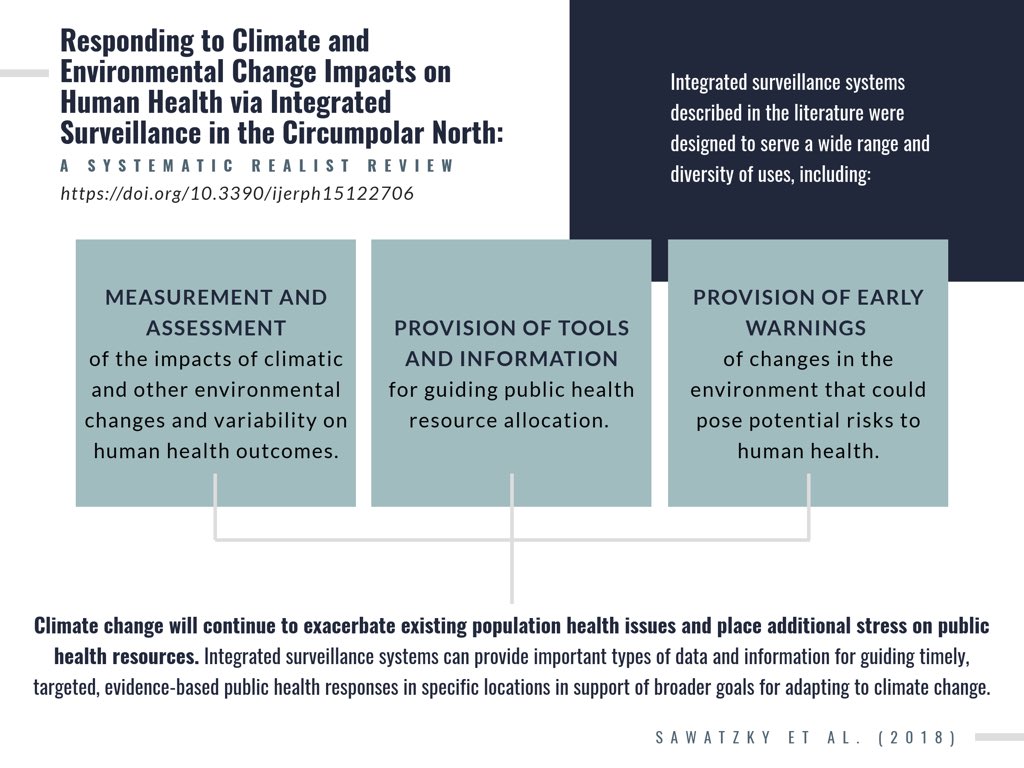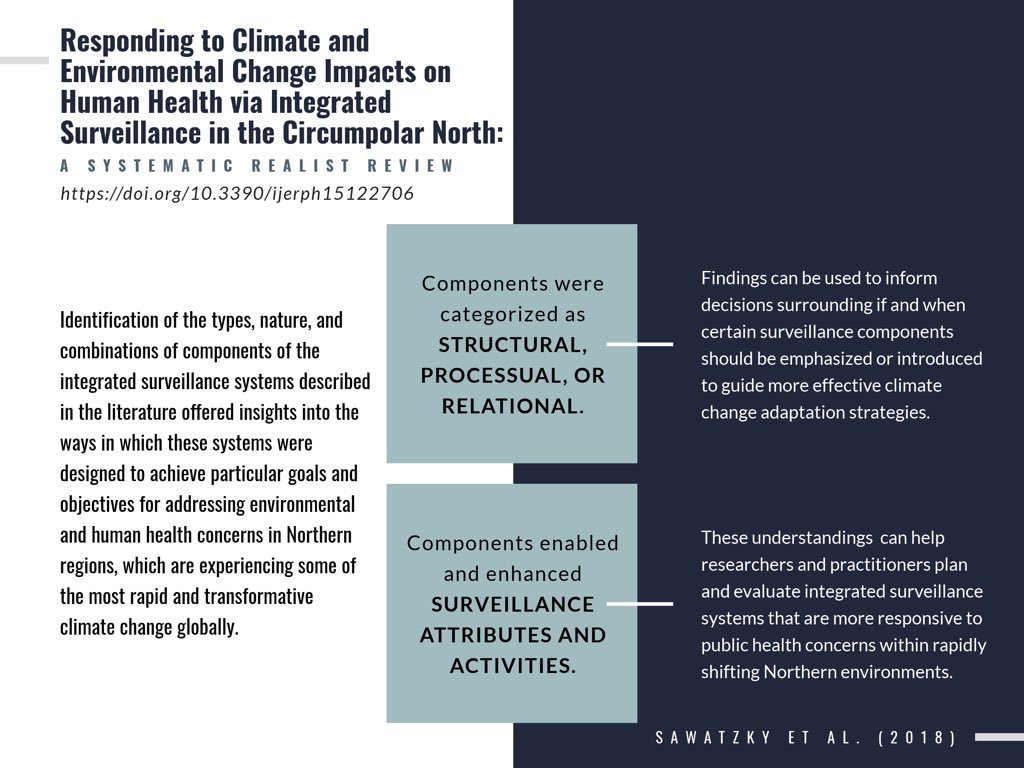Congratulations to Alexandra Sawatzy on her recent publication. Alex reviewed integrated surveillance used for responding to climate and environmental change impacts on human health in the Circumpolar North. The article can be accessed, for free, at: https://www.mdpi.com/1660-4601/15/12/2706
Key Messages:
Key Message 1:
The wide range and diversity of integrated surveillance systems described in the literature can help guide and target evidence-based public health responses in support of climate change adaptation in the North.
Key Message 2:
2: Findings offer insight into how these systems can be designed to be more responsive to public health concerns within rapidly shifting Northern environments.
What are key components of integrated surveillance?
Recommendations & Next Steps:
Article citation:
Sawatzky, A., Cunsolo, A., Jones-Bitton, A., Middleton, J., Harper, S.L. (2018). Responding to Climate and Environmental Change Impacts on Human Health via Integrated Surveillance in the Circumpolar North: A Systematic Realist Review. Int. J. Environ. Res. Public Health.15(12), 2706. Click here to access the article (free open-access)
Abstract:
Environments are shifting rapidly in the Circumpolar Arctic and Subarctic regions as a result of climate change and other external stressors, and this has a substantial impact on the health of northern populations. Thus, there is a need for integrated surveillance systems designed to monitor the impacts of climate change on human health outcomes as part of broader adaptation strategies in these regions. This review aimed to identify, describe, and synthesize literature on integrated surveillance systems in Circumpolar Arctic and Subarctic regions, that are used for research or practice. Following a systematic realist review approach, relevant articles were identified using search strings developed for MEDLINE® and Web of Science™ databases, and screened by two independent reviewers. Articles that met the inclusion criteria were retained for descriptive quantitative analysis, as well as thematic qualitative analysis, using a realist lens. Of the 3431 articles retrieved in the database searches, 85 met the inclusion criteria and were analyzed. Thematic analysis identified components of integrated surveillance systems that were categorized into three main groups: structural, processual, and relational components. These components were linked to surveillance attributes and activities that supported the operations and management of integrated surveillance. This review advances understandings of the distinct contributions of integrated surveillance systems and data to discerning the nature of changes in climate and environmental conditions that affect population health outcomes and determinants in the Circumpolar North. Findings from this review can be used to inform the planning, design, and evaluation of integrated surveillance systems that support evidence-based public health research and practice in the context of increasing climate change and the need for adaptation.
The article can be accessed, for free, at: https://www.mdpi.com/1660-4601/15/12/2706



